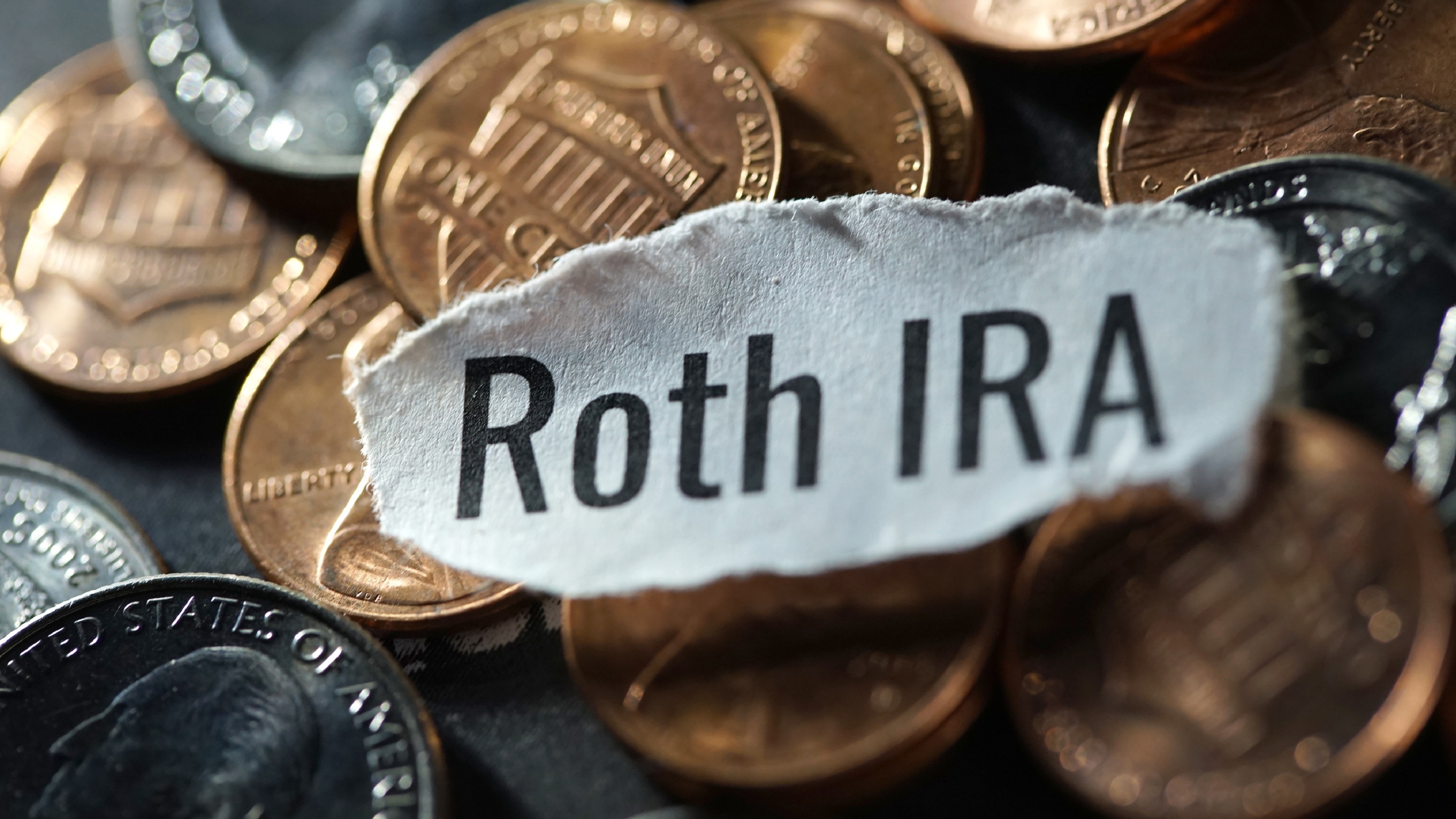Roth IRAs: What They Are and How They Work
Roth IRAs are individual retirement accounts that allow tax-free investment growth and distributions.
Kathryn Pomroy

Roth IRAs are individual retirement accounts (IRAs) that allow workers to save money for retirement using after-tax dollars. This means taxes are paid on the contributions before they are added to the account. As a result, the funds are allowed to grow tax-free over time, enabling them to be withdrawn tax-free in the future. This tax strategy has made Roth IRAs a workhorse in modern retirement plans, especially for young savers, and surprisingly for baby boomers, as well.
As of the second quarter of 2025, 13.8 million people are now saving and investing for retirement through 17.8 million IRA accounts. And, when looking by generation, average contributions for Gen X and boomers have increased by 25% and 37%, respectively, from the second quarter of 2024, according to a 2025 Fidelity survey.
A Roth IRA differs from a traditional IRA in terms of how taxes are treated. Taxes are paid before contributions are made to a Roth, but they're paid on a traditional IRA when the money is withdrawn. A Roth and traditional IRA also have different withdrawal requirements, rules for accessing the account, and other distinctions. In general, Roths are more flexible and offer advantages that have made them an increasingly popular option for investors.
From just $107.88 $24.99 for Kiplinger Personal Finance
Become a smarter, better informed investor. Subscribe from just $107.88 $24.99, plus get up to 4 Special Issues

Sign up for Kiplinger’s Free Newsletters
Profit and prosper with the best of expert advice on investing, taxes, retirement, personal finance and more - straight to your e-mail.
Profit and prosper with the best of expert advice - straight to your e-mail.
How are Roth IRAs funded?
Workers can fund a Roth IRA or deposit assets in the account from various sources, including regular contributions from the account owner, spousal IRA contributions, rollovers, conversions and transfers. A Roth also allows for the contributed funds to be placed in a wide variety of investments.
Regular Roth contributions must be made in the form of cash rather than securities or other assets. That's because not every income source can be used to fund a Roth. For example, some excluded sources include rental and interest income, dividends, capital gains on stocks and income from pensions or annuities.

Roth IRA withdrawal rules and penalties
The IRS wants you to avoid spending Roth IRA funds for non-retirement purposes and has set up several barriers for withdrawals. So, before making a withdrawal from your Roth IRA, review the rules to avoid penalties and taxes.
For instance, you must distinguish between money you deposited in the account (contributions) versus money you earned from investment gains in the account (earnings).
Contribution withdrawals. One of the biggest advantages of Roth IRAs over traditional IRAs is that you can withdraw from the contributions you made to your Roth IRA at any time without taxes or penalties. But before you raid your Roth IRA, be very careful. Ensure you understand exactly how much you have contributed versus what you have earned in the account to avoid taxes and penalties.
Earnings withdrawals. You may have to pay taxes and penalties if you withdraw from the money you earned in your Roth IRA. You can generally withdraw earnings from a Roth IRA without penalty if you meet certain conditions. These are called qualified withdrawals. However, you will face a 10% early withdrawal penalty and may be subject to taxes for violating these conditions. Generally, early distributions refer to those you receive from an IRA before reaching age 59-½.
Qualified withdrawals. For earnings on contributions to be considered qualified distributions, they must meet specific withdrawal requirements. This list is not exhaustive.
They must occur at least five years after the account was established and funded. Additionally, one of these conditions must also be met: the Roth holder must be at least age 59-½ or disabled, the distribution must be used to buy or build a first home for the account holder or a qualified family member, or the money is being distributed to the holder's beneficiary upon their death.
For unqualified or early distributions, a penalty can be avoided if the money is used for qualified medical expenses, insurance, childbirth, adoption, or qualified higher education expenses.
The rules on qualified distributions (withdrawals) are complex. If in doubt, refer to the IRS's Roth IRA guidance or ask a financial adviser for assistance.
Roth IRA contribution limits
Pay attention to Roth contribution limits, which the IRS may raise yearly.
Maximum contribution. For 2025, the maximum amount a person can contribute to a Roth IRA is $7,000 a year, although you can't contribute more than your earned income in any tax year. In 2026, the contribution amount increases to $7,500.
Catch-up contributions. Those age 50 or older can also make catch-up contributions of an additional $1,000 per year in 2025. In 2026, you can make additional catch-up contributions of $1,100 per year.
All IRAs count. In 2026, the maximum total contribution of $7,500 (up from $7,000 in 2025), or the additional catch-up amount of $1,100 (up from $1,000 in 2025), is shared across all IRAs, including traditional IRAs. For example, since the 2026 IRA limit is a combined $7,500 for both Traditional and Roth IRAs (if you are under age 50), a $4,000 contribution to a Traditional IRA means you can only contribute up to $3,500 more to a Roth IRA that same year.
Eligibility and income phaseouts. Not everyone is eligible to contribute to a Roth. Investors must have earned income in the tax year for which they wish to contribute. They will also be ineligible to contribute if their modified adjusted gross income (MAGI) exceeds a certain amount, known as an income phaseout.
In 2025, individual investors must earn less than $150,000 to contribute the full amount to a Roth and less than $165,000 to be eligible to contribute part of it. For married taxpayers filing jointly and living with their spouse, these numbers rise to $236,000 for the full amount and $246,000 for a partial contribution.
In 2026, individual investors must earn less than $153,000 (up $3,000 from 2025) to contribute the full amount to a Roth and less than $168,000 to be eligible to contribute part of it. For married taxpayers filing jointly and living with their spouse, these numbers rise to $242,000 for the full amount and $252,000 for a partial contribution.
Most financial institutions also have their own set of requirements for Roths, like varying minimum required balances. Some firms may charge an inactivity fee on accounts that remain inactive for an extended period.
Ultimately, investors are advised to do their due diligence when selecting a financial institution to manage their Roth or other retirement accounts.
Are you too old for a Roth IRA?
Does age matter? As with many retirement planning decisions, the answer here is "it depends." With a Roth IRA, you are making the gamble on tax rates today versus tomorrow, and the amount that your invested money will grow. Younger workers have a built-in advantage when investing in a Roth IRA, as their investment will grow tax-free over a long period, likely surpassing the amount they would have saved by taking the upfront tax benefit of a traditional IRA.
If you are currently in a high tax bracket and need some tax relief, or you think you will be in a lower tax bracket as you near retirement, then a traditional IRA may be a better choice.
However, Roth IRAs are more flexible than traditional IRAs, so there are cases when older workers might want to opt for a Roth. After all, it would be self-defeating to make contributions to a traditional IRA after age 73 when you are required to take mandatory distributions.
Tax diversification. If most of your retirement funds are before-tax vehicles like traditional 401(k)s or IRAs, then a Roth IRA could help offset some of the tax burden when it comes time to spend down your nest egg.
No RMDs. During the lifetime of the original Roth IRA owner, there are no required minimum distributions (RMDs). RMDs require you to withdraw a certain amount from a traditional IRA or 401(k) account, generally starting at age 73. A Roth IRA can help with tax planning and facilitate long-term growth.
Better for your heirs. Roth IRAs can be an effective way to leave money to your heirs, as they may access funds without owing taxes. For this reason (and several other reasons), a Roth IRA can be an important part of your estate plan.

Roth IRA investment options
An IRA offers a wider array of investment options than an employer-sponsored plan, like a 401(k). Additionally, the owner can keep and contribute to their Roth IRA indefinitely, as there are no required minimum distributions, unlike those with traditional IRAs and 401(k)s.
As with any retirement account, you should include a diverse mix of investments with varied risk profiles, tailored to your investment time horizon and your willingness (or unwillingness) to take risks. Your Roth IRA may include a mix of mutual funds, ETFs, stocks, bonds, CDs, annuities, and target-date funds.
Prohibited investments include life insurance, collectibles, art, personal real estate and a few other sophisticated investments.
What is a self-directed Roth IRA?
A self-directed Roth IRA offers access to the largest number of investment options compared to other types of Roth IRAs; however, not every firm that provides IRAs may provide self-directed Roth IRAs.
With a self-directed Roth, the investor, rather than the financial institution that manages the account, chooses how the funds will be invested. Additional investment options include gold, cryptocurrency, real estate, partnerships, and even a franchise business. However, not all financial institutions offer every investment option, so investors may want to consider that when selecting a firm to manage their Roth.
These types of IRAs are high-risk and not suited to most investors. For more, see the reasons why you should consider avoiding a self-directed Roth IRA.
How to open a Roth IRA
It's not difficult to open a Roth IRA; you need to follow a few simple steps outlined in our story, How to Open a Roth IRA in Five Simple Steps.
Generally, you can make IRA contributions for a given tax year any time from January 1 of that year until the federal tax-filing deadline of the following year, which is typically April 15 (or the next business day if it falls on a weekend or holiday). Experts recommend contributing as early as possible for the greatest tax-free growth.
Bottom line: Should you have a Roth IRA?
A Roth IRA can be a good investment option, but whether it’s the best option for you depends on your financial situation, goals, and tax considerations. A Roth offers tax-free growth and withdrawals, no RMDs, and it can be a hedge against tax increases. On the other hand, there are income limits, upfront costs, and no immediate tax deduction.
If you’re early in your career or expect your income (and tax bracket) to increase, a Roth can be a good choice. But if you’re in a high tax bracket now and expect it to be lower in retirement, a Traditional IRA might be better for the upfront deduction. It's your choice. If you need more detailed information, it's always best to seek guidance from a qualified financial adviser specializing in retirement planning or a tax professional.
Want more guidance on retirement savings? Sign up for Kiplinger's six-week series, Invest for Retirement.
Related articles
Profit and prosper with the best of Kiplinger's advice on investing, taxes, retirement, personal finance and much more. Delivered daily. Enter your email in the box and click Sign Me Up.

Jacob is the founder and CEO of ValueWalk. What started as a hobby 10 years ago turned into a well-known financial media empire focusing in particular on simplifying the opaque world of the hedge fund world. Before doing ValueWalk full time, Jacob worked as an equity analyst specializing in mid and small-cap stocks. Jacob also worked in business development for hedge funds. He lives with his wife and five children in New Jersey. Full Disclosure: Jacob only invests in broad-based ETFs and mutual funds to avoid any conflict of interest.
- Kathryn PomroyContributor
-
 My Top 10 Stock Picks for 2026
My Top 10 Stock Picks for 2026Each year, we ask an expert to pick 10 stocks that have the potential to beat the market over the next 12 months. Here are his choices for 2026.
-
 Special Report: The Future of American Politics
Special Report: The Future of American PoliticsThe Kiplinger Letter The Political Trends and Challenges that Will Define the Next Decade
-
 We're Still Bullish on Stocks
We're Still Bullish on StocksWe're still bullish on stocks for 2026, but now is the time for investors to pull in their horns and dial down risk.
-
 My Top 10 Stock Picks for 2026
My Top 10 Stock Picks for 2026Each year, we ask an expert to pick 10 stocks that have the potential to beat the market over the next 12 months. Here are his choices for 2026.
-
 We're Still Bullish on Stocks
We're Still Bullish on StocksWe're still bullish on stocks for 2026, but now is the time for investors to pull in their horns and dial down risk.
-
 These Were the Hottest S&P 500 Stocks of the Year
These Were the Hottest S&P 500 Stocks of the YearAI winners lead the list of the S&P 500's top 25 stocks of 2025, but some of the names might surprise you.
-
 Stocks That Could Take Off in the New Year
Stocks That Could Take Off in the New YearThere are three areas of potential in the 2026 stock market.
-
 Now That You've Built Your Estate Planning Playbook, It's Time to Put It to Work
Now That You've Built Your Estate Planning Playbook, It's Time to Put It to WorkYou need to share details with your family (including passwords and document locations) and stay focused on keeping your plan up to date.
-
 I'm a Wealth Adviser: These 10 Strategies Can Help Women Prepare for Their Impending Financial Power
I'm a Wealth Adviser: These 10 Strategies Can Help Women Prepare for Their Impending Financial PowerAs women gain wealth and influence, being proactive about financial planning is essential to address longevity and close gaps in confidence and caregiving.
-
 How to Make 2026 Your Best Year Yet for Retirement Savings
How to Make 2026 Your Best Year Yet for Retirement SavingsMake 2026 the year you stop coasting and start supercharging your retirement savings.
-
 You Saved for Retirement: 4 Pressing FAQs Now
You Saved for Retirement: 4 Pressing FAQs NowSaving for retirement is just one step. Now, you have to figure out how to spend and maintain funds. Here are four frequently asked questions at this stage.

